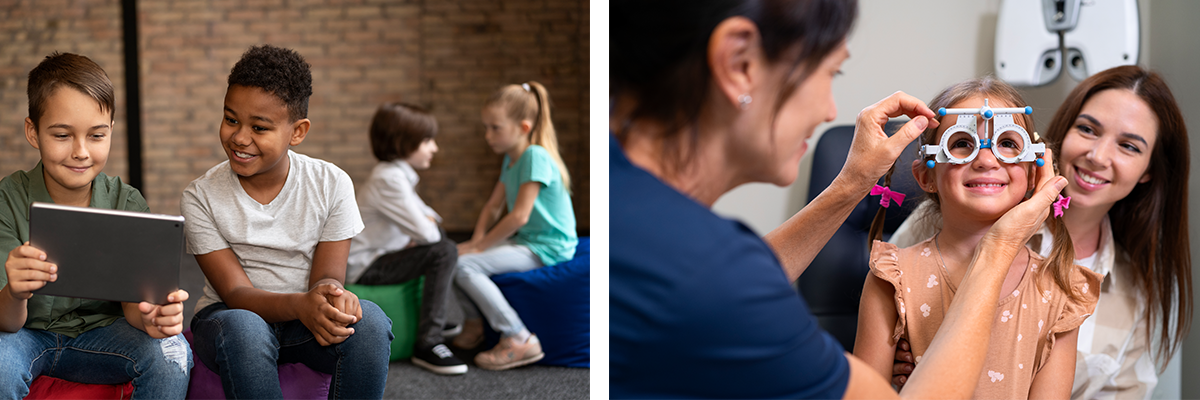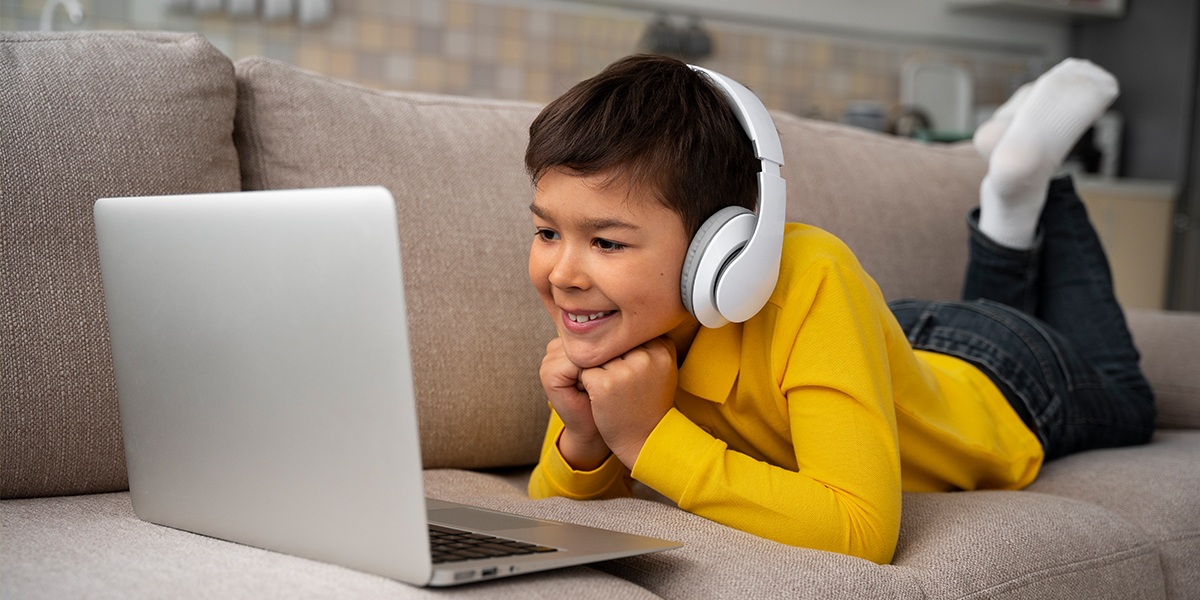Families
Screen Time: How to Keep Kids’ Eyesight Safe this Summer
Children who spend too much time in front of screens risk harming their eye health. Excessive screen use can lead to problems such as short-sightedness, eye strain, and impaired visual development. MonacoSanté has the lowdown with everything you need to know.
Limit screen time
During the school holidays, children often spend more time in front of screens. Whether they’re watching TV, playing video games, or using tablets, phones, or computers, excessive screen time can be harmful to their eyesight, sleep, and general well-being. To minimise the risks, there are a few simple preventive measures and precautions that can be taken. Dr Philippe Berros, an ophthalmologist based at the Monaco International Ophthalmology Centre in Fontvieille, knows all about the problem. Every week, parents bring their children to his practice for advice and support. “It’s not the screens themselves that are the problem, but the way children use them,” he explains. That’s why his first piece of advice is to limit screen time. “The World Health Organisation recommends a maximum of one hour per day for children aged 3 to 6, and no more than two hours a day for those aged 6 to 12.” He also recommends taking regular breaks. “It’s important to look into the distance every so often, so the eye muscles can relax. You also need to blink regularly, to keep the cornea hydrated. When the eyes stay open, the tear film evaporates, and the eyes will start to sting.” Dr Berros advises following the 20-20-20 rule: every 20 minutes, have your child look at something 20 feet away (about 6 metres) for 20 seconds. “And always keep screens at least 40 cm away from the eyes, as they have to work harder to focus on objects that are closer.” The doctor’s last tip is to make sure the screen is in the right position. “Ideally, the screen should sit slightly below eye level. ”
Natural light is best for healthy visual development
“One of the most important things you can do for your child’s eyesight is to make sure they spend at least two hours a day outdoors.” Because natural light has been shown to have benefits for visual development and represents a healthy alternative to screen time, Dr Berros believes this is one of the best rules of thumb for parents and children to follow. “Spending too long in front of a screen causes the body to produce more melatonin, which disturbs the natural circadian rhythm of wakefulness and sleep,” he adds. Blue light from screens stimulates the brain and can make it more difficult for children to fall asleep. “That’s why screens should be switched off at least one hour before bedtime. ” Calm evening routines like reading, stories, or soft music help children to settle down and rest their eyes after a long day. Blue light filters are not the ready-made solution some are led to believe. “In theory, blue light filters can help reduce melatonin disruption and make screen use more comfortable, even for children,” says Dr Berros. “But it’s not going to fix the problem if you’re spending too much time in front of the screen.” It’s important to create a suitable visual environment for your child, by opting for soft, indirect lighting and ensuring they don’t use screens in the dark.

Warning signs to watch out for
As the doctor explains, it’s recommended that younger children are seen by a specialist for three regular check-ups, at the ages of nine months, three years, and six years. Even if nothing untoward is found, there are still a number of warning signs that should prompt parents to consult an eye specialist. “If your child blinks frequently, complains of headaches, or struggles to see things from a distance, seek medical advice. Some children say they’re unable to see the blackboard at school. Those are obvious signs. ” The ophthalmologist will carry out a comprehensive eyesight assessment, along with an orthoptic check-up to look at how the eyes move and work together. “An orthoptic check-up is a bit like physiotherapy for the eyes. And if we find issues or signs of visual fatigue, we’ll recommend orthoptic therapy,” explains Dr Berros. The specialist will examine every part of the child’s eye from cornea to retina, and check their ability to distinguish colours. “A child’s eyesight continues to develop until the age of 6. That’s why it’s important to get another check-up at that age. If there’s even a slight decrease in visual acuity, it needs to be corrected straight away. ” Treatment means wearing glasses, or contact lenses for children aged over 9.
Myopia: a rising problem in children
When it comes to screen time, the ophthalmologist’s primary role is to educate. “Prevention is the best treatment. We need to educate people and explain clearly the dos and don’ts of screen use. For example, by helping parents and children to understand the best way to work on a computer. ” In recent years, doctors in various countries across Asia have begun to see an emerging trend. “Asia is experiencing an epidemic of short-sightedness in children. Because they spend too much time sitting in front of screens in the dark. Myopia - the technical name for short-sightedness - develops when the eyeball becomes too long, which prevents you from focusing on distant objects. ” A South Korean study published in February 2025 found that one hour of screen time a day causes myopia to develop 21% faster. And in children already affected by the condition, it can cause short-sightedness to deteriorate by 54%. “With these patients, we first of all try to limit the eye’s growth by using special glasses. And when they’re older, they can wear orthokeratology lenses at night, that work by pressing on the cornea. They take them out in the morning, and can see without glasses all day,” explains Dr Berros. In today’s digital world, protecting your child’s eyesight isn’t optional - it’s an essential part of safeguarding their long-term visual health..

